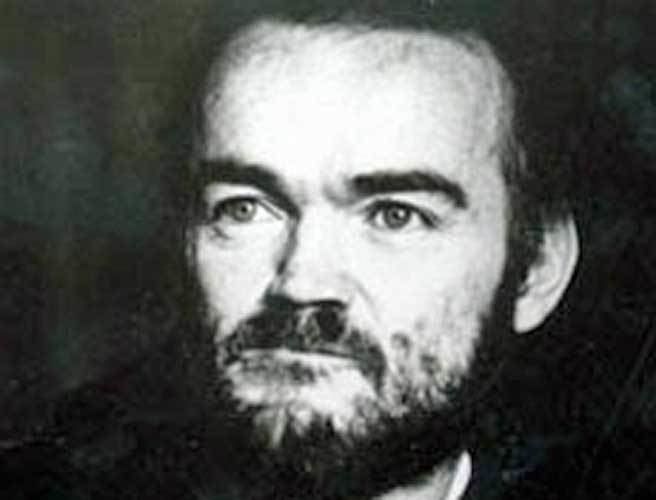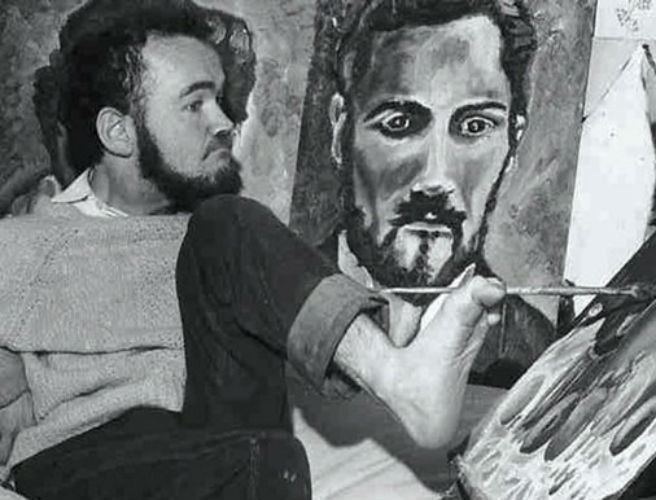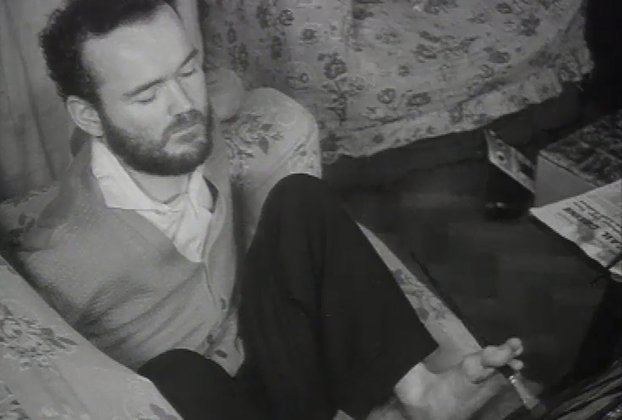Nationality Irish Name Christy Brown | Role Writer Movies My Left Foot | |
 | ||
Born 5 June 1932Crumlin, Dublin, Ireland ( 1932-06-05 ) Occupation Novelist, painter, poet Artwork Boats In The Harbour, Garage in the snow Siblings Lily Brown, Peter Brown, Eamon Brown, Francis Brown Books My Left Foot, Down All the Days, A shadow on summer, Wild grow the lilies, Champ: Wide Retriever Similar People | ||
My Left Foot (1989) - Christy Brown Story (HD Tribute)
Christy Brown (5 June 1932 – 7 September 1981) was an Irish writer and painter who had cerebral palsy and was able to write or type only with the toes of one foot. His most recognized work is his autobiography, titled My Left Foot (1954). It was later made into a 1989 Academy Award-winning film of the same name, starring Daniel-Day Lewis as Brown.
Contents
- My Left Foot 1989 Christy Brown Story HD Tribute
- Christy brown irish artist brief interview from 1962
- Life
- Death
- Literary legacy
- Achievement
- References

Christy brown irish artist brief interview from 1962
Life

Christy Brown was born into a working-class Irish family at the Rotunda Hospital in Dublin in June 1932. His parents were Bridget ( Fagan 1901-1968) and Patrick Brown. He had 22 siblings. Out of these 22, 13 lived and 9 died in infancy. After his birth, doctors discovered that he had severe cerebral palsy, a neurological disorder which left him almost entirely spastic in his limbs. Though urged to commit him to a hospital, Brown's parents were unswayed and subsequently determined to raise him at home with their other children. During Brown's adolescence, social worker Katriona Delahunt became aware of his story and began to visit the Brown family regularly, while bringing Christy books and painting materials as, over the years, he had shown a keen interest in the arts and literature. He had also demonstrated extremely impressive physical dexterity since, soon after discovering several household books, Christy had learned to both write and draw himself, with the only limb over which he had unequivocal control: his left leg. Brown quickly matured into a serious artist. Although Brown famously received almost no formal schooling during his youth, he did attend St Brendan's School-Clinic in Sandymount intermittently. At St. Brendan's he came in contact with Dr. Robert Collis, a noted author. Collis discovered that Brown was also a natural novelist and, later, Collis helped use his own connections to publish My Left Foot, by then a long-gestating autobiographical account of Brown's struggle with everyday life amidst the vibrant culture of Dublin.

When My Left Foot became a literary sensation, one of the many people who wrote letters to Brown was married American woman Beth Moore. Brown and Moore became regular correspondents and, in 1960, Brown holidayed in North America and stayed with Moore at her home in Connecticut. When they met again in 1965 they began an affair. Brown journeyed to Connecticut once more to finish his magnum opus, which he had been developing for years. He finally did so in 1967 with help from Moore, who introduced and administered a strict working regimen, mostly by denying him alcohol (on which Brown was dependent) until a day's work was completed. The book, titled Down All the Days, was published in 1970 and was inscribed with a dedication to Moore that read, "For Beth, who with such gentle ferocity, finally whipped me into finishing this book..." During this time, Brown's fame continued to spread internationally and he became a prominent celebrity. Upon his return to Ireland, he was able to use proceeds from the sales of his books to design and move into a specially constructed home outside Dublin with his sister's family. Though Brown and Beth had planned to marry and live together at the new home, and though Moore had informed her husband of these plans, it was around this time that Brown began an affair with Englishwoman Mary Carr, whom he met at a party in London. Brown then terminated his affair with Moore and married Carr at the Registry Office, Dublin, in 1972. They moved to Stoney Lane, Rathcoole, County Dublin (now site of Lisheen Nursing Home), to Ballyheigue, County Kerry and then to Somerset. He continued to paint, write novels, poetry and plays. His 1974 novel, A Shadow on Summer, was based on his relationship with Moore, whom he still considered a friend.
Death

Brown's health deteriorated after marrying Carr. He became mainly a recluse in his last years, which is thought to be a direct result of Carr's influence and perhaps abusive nature. Brown died at the age of 49 after choking during a lamb chop dinner. His body was found to have significant bruising, which led many to believe that Carr had physically abused him. Further suspicions arose after Georgina Hambleton's biography, The Life That Inspired My Left Foot, revealed a supposedly more accurate and unhealthy version of their relationship. The book portrays Carr as an abusive alcoholic and habitually unfaithful. In Hambleton's book, she quotes Brown's brother, Sean, as saying: "Christy loved her but it wasn't reciprocated because she wasn't that kind of person. If she loved him like she said she did, she wouldn't have had affairs with both men and women. I feel she took advantage of him in more ways than one."
Literary legacy
Brown's self-proclaimed masterpiece, Down All the Days, was an ambitious project drawn largely from a playful expansion of My Left Foot; it also became an international best-seller, translated into fourteen languages. The Irish Times reviewer Bernard Share claimed the work was "the most important Irish novel since Ulysses." Like James Joyce, Brown employed the stream-of-consciousness technique and sought to document Dublin's culture through the use of humour, accurate dialects and intricate character description. Down All the Days was followed by a series of other novels, including A Shadow on Summer (1972), Wild Grow the Lilies (1976) and A Promising Career (published posthumously in 1982). He also published three poetry collections: Come Softly to My Wake, Background Music and Of Snails and Skylarks. All the poems are included in The Collected Poems of Christy Brown.
